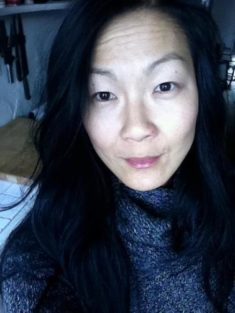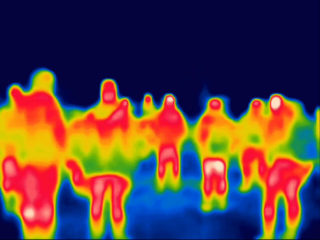It is hard to imagine a more opportune place than a theater in a public university for a conference structured around the theme public and publics. As Provost Joy Connelly pointed out in her opening remarks, the Graduate Center’s publicness is an integral part of its ethos. The day-long conference, conceived by Dr. Amy Chazkel and Dr. Setha Low and arranged together with students in their doctoral seminar “Public and Publics,” was a testament to that notion. Although each of the four panels addressed different aspects of public and collective life, throughout the presentations, there were concerns with the contestation of public space, voice, and agency by distinct publics with different and often competing interests. The following is a sampling of presentations from each panel.
The first panel of the day “Publics, Law, and Governance,” revealed the often intricate and dubious processes by which law and jurisdiction are used to govern the body politic on local, national and global scales. Dr. Sally Engle Merry (anthropology and law at NYU), whose talk was drawn from her recent publication, gave an interesting account of how numeric indicators have become increasingly central to how we govern and are being governed. Although such indicators are useful and powerful policy-making tools, Merry cautioned that numbers are also homogenizing and simplistic representations of lived social reality. Merry’s phrase “indicator culture” implies that there are significant ontological and epistemological problems tied to knowledge production and circulation based on quantification and that we would do well to beware the seductive power of numbers. Indeed, if publics are constituted, conceptualized, classified, and governed through the prism of numbers, the idea of an empirical public or publics with agency and voice becomes harder to sustain.
GC Ph.D. candidate in Anthropology, Misty Crooks gave a sophisticated, interdiscursive analysis of how lawmakers in North Carolina used their transgender bathroom law, known as House Bill 2 (HB 2), as a performance or show of state-level power. Crooks argued that the public, political discourses around HB 2 seemed to be about privacy, safety, and security, but that the discourse and the bill itself were also, and perhaps primarily, about gender and race. By focusing exclusively on the protection of women and girls, the discourse around HB 2, according to Crooks, constructed and re-entrenched a public perceived as cisgendered and male. Instead of focusing on the substance of the law in their justifications for HB 2, N.C. lawmakers and supporters of the bill repeatedly cited federal overreach and historical federal abuse of power. Crooks suggested that the language of overreach really was a thinly veiled racist opposition to a black President and the first federal administration to support transgender rights.
During the second panel on publics and social movements, the presenters addressed the dynamic between what might be perceived as mainstream institutional actors and counterpublics. Cecilia Salvi, GC Ph.D. candidate in anthropology, presented her ongoing ethnographic research on Argentinian Cartoneros, who salvage and repurpose cardboard from urban public sites for making books. A notable feature of the movement is their distinctly anti-capitalist mode of production and distribution. Each book is unique, handmade and sold in person. This affords Cartoneros an empowering form of self-representation and circulation of subjectivity. Salvi suggested that Cartoneros and their DIY culture create the possibility of an alternative public space in which people from traditionally marginalized communities can represent themselves. Whether their practice has democratizing potential remains an open question to both Salvi and the communities she studies.
Vladimir Gurewich, GC Ph.D. candidate in anthropology, used Michael Warner’s conceptual framework to talk about the formation of three distinct counterpublics under Trump. The first portrays itself as the public we should trust due to its renewed commitment to objective truth and common sense (The New York Times, for example); the second presents as a unified progressive public – the protesters for humanity and common cause who unite against Trump; the third is a virtual counterpublic which forms around fear and organizes itself through economic persuasion and market discourse’s ability to give and withhold credit. Gurewich’s sketch seems to capture the current fragmentation of American publics into antagonistic counterpublics, and it could be suggested that the kind of radical democracy that Ernesto Laclau and Chantal Mouffe articulated has been realized.
In his talk, cultural studies scholar Craig Willse unpacked how the spatial politics governing homeless populations living with HIV/AIDS are underwritten by and at the same time work to create racialized public narratives, geographies, borders and boundaries.
Keynote speaker Don Mitchell, distinguished professor of social, cultural, and economic geography at Uppsala University, picked up the thread about spatial politics and the ways in which space both empowers and disenfranchises publics. Mitchell emphasized that publics need physical public space to properly exist and sustain themselves. Without public space, Mitchell argued, political struggle is impossible, and he seemed to suggest that the very raison d’être of physical public space is that it is a space for representation. As Mitchell noted, the Occupy movement is, of course, an apt illustration of this very point. In 20 captivating theses, Mitchell thought about the nature and promise of physical, public space; in addition to being essential for political organizing and the formation of publics, physical public space is also an ideal that must be struggled for and willfully created. Mitchell summed up his thesis with a telling quote from David Harvey’s Spaces of Neoliberalization: “Rights mean nothing without the ability to concretize them in absolute space and time.” Mitchell’s talk was an invitation to think carefully about the act of being public in physical space, and given the increasing depoliticization of urban public space and the fact that such space is often claimed by the powerful, his points really hit home.
Mitchell’s keynote was a nice transition to the third panel on publics and space. Presenters zoomed in on how space and publics co-construct one another, and sociologist Mike Owen Benediktsson, used Latour’s actor-network theory to think about how publics are created, governed, and excluded from certain urban spaces through the politics of design and material objects. Using the renovation of Brooklyn Bridge Park as a case study, Benediktsson showed that interventions in urban space are often based on undemocratic, top-down decision-making by public-private organizations and interests, and are accompanied by overtly exclusionary ideas about who is and who is not meant to access and use specific urban spaces. Benediktsson’s presentation was a convincing demonstration of the idea that the design of the built environment implicates a conceptual definition of who a given public is; thinking about the “selective inclusion” of publics is significant because it forces us to confront forms of exclusion which are literally covered over once certain physical objects are built to enforce them.
The final panel of the day was about how art, performance, and media intervene in and produce publics and space. Art historian Claire Bishop, gave an overview of how art in public throughout history has been used by artists and patrons to express and encourage both social and political conformity and dissent. GC PhD candidate in English Kendra Sullivan talked about her involvement in the art collective Mare Liberum’s public practice, which engages local publics in collaborative projects around regional NY waterways - the largest unscripted public space in the city, according to Sullivan. She also talked about the semi-open, semi-closed community which has formed around a luncheonette in Brooklyn. During the Q&A, audience members challenged the notion of the luncheonette’s concurrent public and private features, its openness and inaccessibility, inclusion and exclusion.
This post provides only a selection of the day’s discussions and does not discuss several of the deeply engaging presentations that made the conference so rich including: historian Eduardo Zimmermann’s talk on the interplay between law, governance, and shifting conceptualizations of public and private in 20th century Argentina; Historian Clarence Taylor’s presentation on the Nation of Islam and how its confrontations with police brutality were portrayed by the media; Anthropologist Carmen Rial’s paper on how publics are created and governed inside the walls of Brazilian mega-stadium Maracanã; GC Ph.D. student Talha Issevenler’s talk on the constitutive role of violence in the construction of public protest movements, and the idea of public space as fundamentally non-neutral, always already imbued with combative elements; and GC Ph.D. candidate Cory Tamler’s talk about how the use of performance metaphors to describe how public space affects the reception and understanding of human stories.
Questions that lingered after a thought-provoking conference will likely prompt even more scholarship and public debate about the possibilities and challenges of public persons and spaces as they fight for realization. Perhaps the inherent tensions of the day’s most cited dichotomous pairs - public-private, open-closed, inclusive-exclusive – will never resolve themselves in a neat Hegelian synthesis. Perhaps the imagined and discursively created publics and spaces that undergird both scholarly theorizations and actualizations of our built environment are born out of and rely on those very oppositions for their critical potential.

